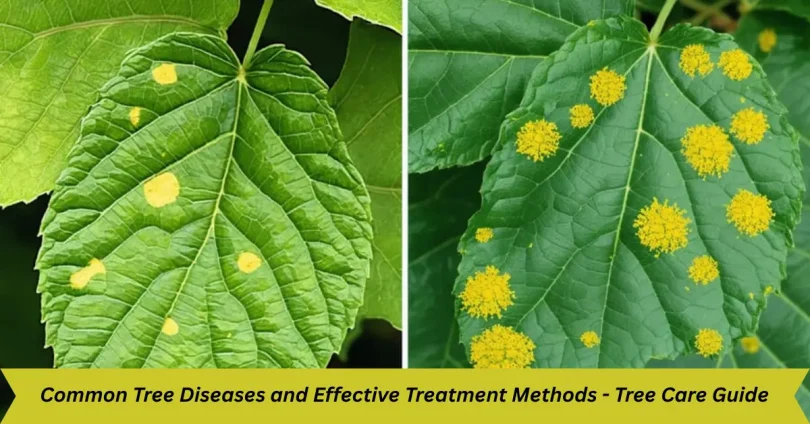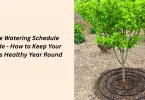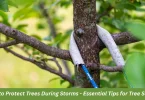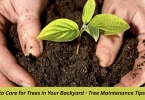Introduction
Trees are a valuable part of our environment, but they can face problems just like any living thing. Insects, fungi, and bacteria can all cause serious damage if not treated in time. That’s why it’s important to understand the signs of tree disease and how to handle them. In this Common Tree Diseases and Effective Treatment Methods – Tree Care Guide, we’ll walk you through the most common tree health issues and show you easy, effective ways to treat them. Whether you’re a homeowner, gardener, or just love your backyard trees, this guide will help you keep them strong and healthy year-round.
What is “Common Tree Diseases and Effective Treatment Methods”?
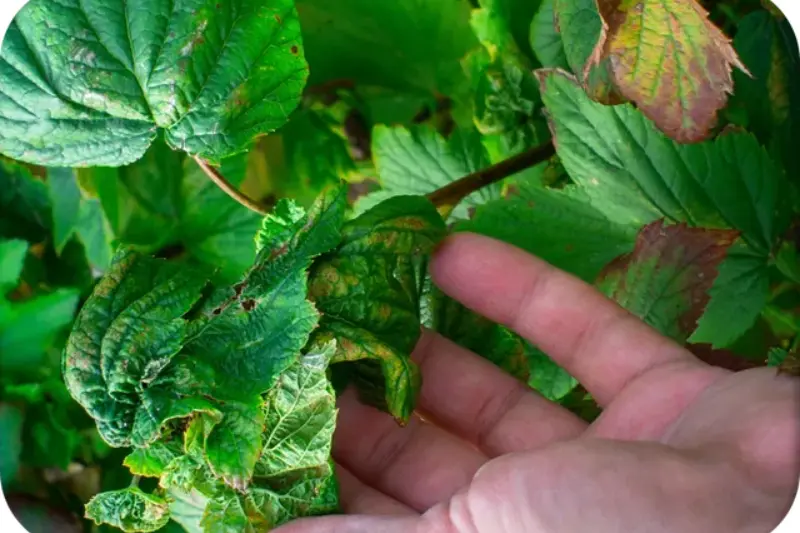
“Common Tree Diseases and Effective Treatment Methods” refers to the most frequently seen health problems that affect trees—such as fungal infections, bacterial diseases, and root rot—and the practical ways to treat or prevent them. These methods include proper pruning, applying fungicides, improving watering practices, and sometimes getting help from tree care professionals.
By learning about these diseases and how to manage them, you can protect your trees from damage, help them grow strong, and maintain a healthy landscape around your home or garden.
Why Is “Common Tree Diseases and Effective Treatment Methods” Important?
Protects the Health of Your Trees
- Prevents Major Damage
Early treatment stops diseases from spreading and damaging the entire tree.
This helps avoid costly removal or replacement. - Supports Long-Term Growth
Healthy trees grow stronger and live longer.
This adds lasting beauty and shade to your property.
Maintains a Safe Environment
- Reduces Risk of Falling Branches
Diseased trees can become weak and unsafe.
Treating them helps prevent accidents and property damage. - Prevents Disease Spread
Infections can spread to nearby trees or plants.
Early care keeps your whole garden or yard healthy.
Saves Time and Money
- Avoids Expensive Treatments Later
Small issues are cheaper to fix early.
Ignoring them can lead to costly professional services. - Minimizes Tree Loss
Treatment can save trees that would otherwise die.
This saves money on replanting and landscaping.
Improves Curb Appeal
- Keeps Trees Looking Green and Full
Healthy trees enhance the appearance of any home or park.
They’re a sign of good care and attention. - Boosts Property Value
Attractive, healthy trees can increase your home’s value.
Buyers are drawn to well-maintained landscapes.
Promotes Environmental Health
- Supports Biodiversity
Healthy trees provide food and shelter to birds, insects, and animals.
Treating tree diseases helps protect local ecosystems. - Improves Air and Water Quality
Trees filter air pollutants and prevent soil erosion.
Keeping them healthy enhances overall environmental quality.
Encourages Responsible Tree Ownership
- Raises Awareness About Tree Care
Understanding diseases builds better care habits.
This leads to more responsible and informed tree maintenance. - Builds Community Pride
Healthy trees improve shared spaces like parks and streets.
Well-maintained trees reflect community care and effort.
Helps Prevent Future Outbreaks
- Stops Recurring Infections
Proper treatment methods prevent disease from returning.
This reduces the chance of long-term tree health issues. - Encourages Preventive Care
Knowing what to watch for makes early detection easier.
Preventive care is always easier than dealing with full outbreaks.
Step-by-Step Guide: Common Tree Diseases and Effective Treatment Methods
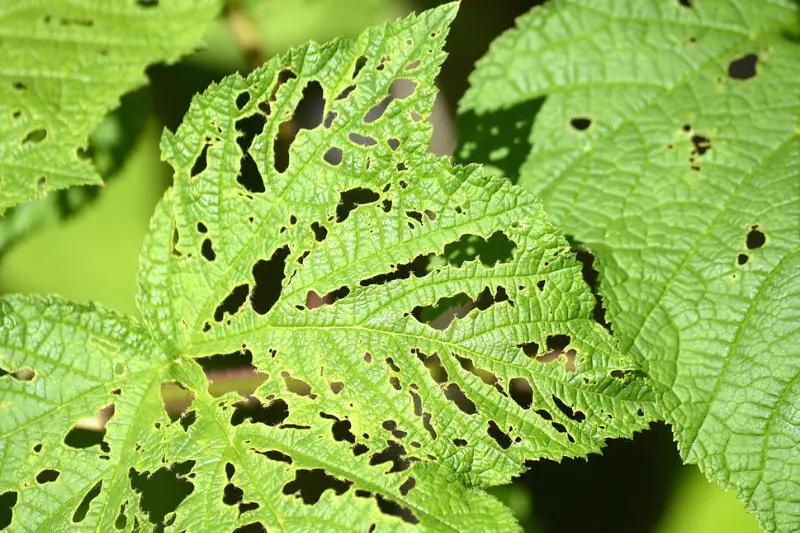
Step 1: Identify the Problem Early
- Look for Signs
Regularly check leaves, bark, branches, and roots for spots, discoloration, wilting, or growths. - Know the Symptoms
Learn the common symptoms of diseases like powdery mildew, root rot, and anthracnose.
Step 2: Diagnose the Disease
- Compare Symptoms
Match what you see with known diseases using reliable online resources or guides. - Get Expert Help
If you’re unsure, consult a certified arborist for a professional diagnosis.
Step 3: Prune Infected Areas
- Use Clean Tools
Cut away affected branches, leaves, or stems using disinfected pruning tools. - Dispose Properly
Do not compost diseased material—bag and discard it to prevent spread.
Step 4: Apply the Right Treatment
- Use Fungicides or Bactericides
Apply tree-safe treatments as directed on the label, based on the disease type. - Try Organic Solutions (If Mild)
Use neem oil, baking soda sprays, or copper-based solutions for light infections.
Step 5: Improve Tree Care Habits
- Water Correctly
Avoid overwatering and ensure good drainage to prevent root rot. - Mulch Wisely
Add mulch around the base (not touching the trunk) to protect roots and retain moisture.
Step 6: Strengthen the Tree’s Environment
- Fertilize Properly
Use balanced fertilizers to boost the tree’s immune response. - Ensure Good Airflow
Thin dense branches to increase sunlight and airflow, reducing fungal growth.
Step 7: Monitor and Maintain
- Watch for Recurrence
Keep an eye on your tree even after treatment to ensure it’s recovering well. - Repeat Treatments If Needed
Some diseases may need multiple treatments during a season.
Step 8: Prevent Future Infections
- Plant Disease-Resistant Species
Choose trees that are naturally resistant to local diseases. - Practice Seasonal Care
Prune in the right season, clean up fallen leaves, and stay proactive year-round.
Advantages and Disadvantages of Common Tree Diseases and Effective Treatment Methods
| Advantages | Disadvantages |
| Improves Tree Health Early identification and treatment help trees recover faster and live longer. | Requires Time and Effort Diagnosing and treating diseases can be time-consuming and may require consistent follow-up. |
| Prevents Spread of Disease Timely treatment stops infections from spreading to nearby trees and plants. | Treatment Costs Can Add Up Some fungicides, bactericides, or professional services can be costly. |
| Saves Money in the Long Run Proper maintenance reduces the need for expensive removals or replacements later. | Risk of Misdiagnosis Mistaking one disease for another may lead to incorrect or ineffective treatment. |
| Maintains Landscape Aesthetics Healthy trees keep your garden or yard looking vibrant and attractive. | Potential Harm from Chemicals Overuse or misuse of chemical treatments can harm the tree, soil, or nearby plants. |
| Supports Environmental Balance Healthy trees contribute to better air quality, soil health, and biodiversity. | Not All Trees Can Be Saved In some advanced cases, treatment may not be effective, and tree removal becomes necessary. |
FAQs – Common Tree Diseases and Effective Treatment Methods
How can I tell if my tree has a disease?
Look for signs like discolored leaves, dead branches, unusual spots, or peeling bark. If something looks off, it’s best to check it early.
What are the most common tree diseases?
Some common ones include powdery mildew, root rot, cankers, leaf spot, and Dutch elm disease. Each affects trees differently.
Can I treat tree diseases myself at home?
Yes, many mild diseases can be treated using pruning, watering properly, or applying safe treatments. But serious problems may need expert help.
Are tree diseases contagious to other trees?
Yes, some diseases can spread through air, soil, or shared tools. That’s why early treatment is important to protect nearby trees.
When should I call a professional arborist?
Call a pro if the tree shows severe damage, the disease keeps coming back, or you’re unsure what to do.
Are chemical treatments safe for my garden?
When used properly, most are safe. But always read the label and avoid overuse to protect plants, pets, and people.
How can I prevent tree diseases?
Water trees the right way, trim them regularly, and keep the area clean. Healthy trees are less likely to get sick.
What if I ignore a tree disease?
Ignoring it can lead to tree death, disease spreading, and even safety risks like falling branches.
Conclusion
Taking care of your trees means keeping an eye out for common diseases and acting early. With the right treatment and a bit of regular care, most tree problems can be handled easily. Healthy trees not only look great but also keep your yard safe and beautiful. Stay alert, treat issues quickly, and don’t hesitate to call a professional if needed.
Bonus Points
- Regular Monitoring Prevents Bigger Issues
Checking your trees often helps you catch early signs of disease before they become serious problems. - Choose Disease-Resistant Tree Species
When planting new trees, select varieties that are naturally resistant to common local diseases. - Proper Spacing Helps Airflow
Giving trees enough space allows air to circulate, reducing moisture buildup that can lead to fungal growth. - Clean Tools After Pruning
Always disinfect your pruning tools to avoid spreading disease from one tree to another. - Mulch Can Protect Tree Roots
Using mulch keeps the soil moist and temperature stable, which supports healthy roots and defends against certain soil-borne diseases. - Hire a Certified Arborist for Major Concerns
For complex or severe tree issues, a certified arborist can provide expert care and safe treatment solutions.

